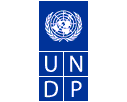

New guide to help developing countries speed up access to climate finance

New guide to help developing countries speed up access to climate finance
New York, 14 September 2011 - The United Nations Development Programme (UNDP) today launched a guidebook aimed at helping decision makers in developing countries to better take advantage of the billions pledged to address climate change.
“Blending Climate Finance through National Climate Funds” is based on UNDP’s experience in setting up, managing and advising 750 funds and providing services for over US$5 billion in contributions pooled from multiple donors.
A step-by-step guide on setting up national climate funds, the publication is a key resource for policymakers, economists, investors and donors involved in national responses to climate change.
“We’re giving governments a recipe on how to access more funding and how to improve management of climate change activities,” said Olav Kjorven, UNDP Assistant Administrator and Director of Development Policy. “This guidebook can fundamentally change the way governments plan, finance and deliver on their climate policies.”
More than 50 international public funds, 45 carbon markets and more than 6,000 private equity funds provide billions of dollars for national-level climate change actions. Between 2009 and 2010, clean energy sector investments worldwide grew 30 percent to a record US$243 billion.
However, only about one tenth of these investments went outside of countries that are members of the G20 grouping to areas of the world highly vulnerable to shifts in climate patterns, such as the Least Developed Countries and Small Island Developing States.
Challenges for developing countries seeking to take climate finance actions include collection of funds from hundreds of sources, coordinating activities funded by them and accounting for results.
While a national climate fund with clearly defined objectives, resources, standards, and monitoring and reporting would help meet these challenges, responsibility for climate finance and planning in many developing countries governments is often spread among multiple ministries.
“Through national climate funds, countries can access more financing and accelerate their response to climate change,” said Olav Kjorven. “This can be a major contribution to setting the world on a cleaner, more equitable and sustainable path.”
Examples of successful national climate funds in Bangladesh, Brazil, China, Indonesia and other countries are highlighted in the guidebook. The guidebook is part of a series of practical manuals, guidebooks and toolkits intended to support countries to transition toward green, low-emission and climate-resilient development available at www.undp.org/climatestrategies.
Learn more about national climate funds in the guidebook: Blending Climate Finance through National Climate Funds: A Guidebook for the Design and Establishment of National Funds to Achieve Climate Change Priorities
Click here to read about the MDG-F's work on the Environment and Climate Change.